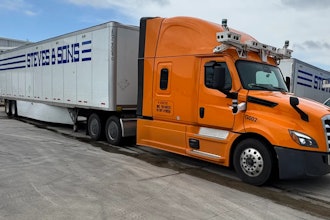
A 2018 study by Deloitte and the Manufacturing Institute predicted that U.S. manufacturing would have 2.1 million unfilled jobs by 2030. The Department of Labor (DOL) Job Openings and Labor Turnover Survey (JOLTS) showed 547,00 unfilled manufacturing jobs as of November 2023.
The answer, according to many experts, is to train the workforce with the technological skills to use the tools and software to become proficient in advanced manufacturing programs such as Industry 4.0, the Internet of Things, 3D printing, and robotics, which will lead to the "smart factory."
It seems that the digital revolution in manufacturing is being presented as the answer to manufacturing's need for skilled workers and that all of the training can be accomplished with online programs. Smart manufacturing is a pipe dream if workers don't first have all the skills to do their jobs. Training for the smart factory will not answer the need for highly skilled workers.
Replacing lost or retired highly skilled workers
According to the Bureau of Labor private industry statistics from 2001 to 2021, the following eight key industries lost 345,318 skilled workers during 20 years. These statistics beg the question: Wouldn't it be practical to focus on replacing these workers and training the people for the projected 2.1 million unfilled jobs with the physical skills necessary to build something on the shop floor before embarking on digital skills and the factory of the future?
Table 1: Key Industry loss of skilled jobs 2002 to 2021
| NAICS Code | Industry | Employees Lost Since 2002 | % |
| 33151 | Ferrous, iron, steel foundry | -46,475 | -47 |
| 33152 | Nonferrous foundries | -30,581 | -38 |
| 332710 | Machine shops | -64,342 | -20 |
| 33211 | Forging and stamping | -3,118 | -26 |
| 3344 | Semiconductors | -157,041 | -30 |
| 333511 | Industrial mold manufacturing | -10,481 | -24 |
| 333514 | Tool and die, jigs, fixtures | -27,769 | -33 |
| 333517 | Machine tool manufacturers | -5,511 | -13 |
| Total | -345,318 |
Source: Bureau of Labor Statistics. Private industry six digit NAICS industries.
Results from the National Association of Manufacturers (NAM) Annual Small Manufacturers Operating Survey point to a glaring problem for America's manufacturers: a lack of qualified workers to fill highly skilled positions. According to former NAM president John Engler, "This skills gap reflects a perfect storm that is quickly converging on manufacturers in their effort to fill factory floor jobs."
Engler's view of the perfect storm makes it sound like the skills gap is a new revelation. He didn't say that this is not a new problem because his own Manufacturing Institute has done multiple surveys for the last 30 years predicting the skilled worker shortage. The problem is that neither he nor many of his members invested in the type of training that could have reduced the impact of the skilled worker problem – apprentice training.
Journey-level advanced training has been neglected for the last 40 years by multinational corporations. Instead of investing in advanced training, they invested in automation, outsourced jobs, bought services from foreign countries, and poached workers from their suppliers. Now, they are in a jam, and there is no pool of highly skilled workers to recruit from.
In the last 40 years, most of the manual and repetitive jobs have been replaced by automation, i.e., robots, cobots, palletizers, and a wide variety of packaging machines. The simple jobs requiring little education and training are pretty much a thing of the past. The kind of training needed in industries like forging and stamping, foundries, advanced machining, tool and die, mold making, and the maintenance of all of the robots and automated machines and systems is apprentice training.
Hands-on training
Apprentice training is mostly "learning by doing." It is about the physical skills to build something on the shopfloor with your hands. The analogy that comes to mind is riding a bike. If you read a book on how to ride a bike, do you know how to ride a bike? No. You will have to eventually get on the bike and figure out the balance and physical skills to ride it.
People attracted to manufacturing are often kinesthetic learners and learn by doing. They don't understand how to do it until they mill, drill, grind, weld, or fabricate it. Training these kinds of highly skilled workers isn't going to happen with a couple of months of on-the-job training. What is needed are apprenticeship programs that lead to journeyman status, which take approximately two to four years to complete.
In this decade, 2.1 million baby boomers are expected to retire from their manufacturing jobs. There is no pool of skilled workers out there to hire. Since the coming retirements were ignored, there's little manufacturers can do now except train new workers. They will have to accept that they must create this new skilled workforce, and the only viable alternative is to focus on investing in the training needed to replace the workers who were laid off and those who have retired or will soon retire.
The Economic Policy Institute says that the passage of President Joe Biden's infrastructure and reconciliation bills would create 556,000 new manufacturing jobs. The reshoring initiative showed that 364,000 manufacturing jobs were reshored in 2022. So, between lost workers, retirements, government programs, and reshoring, we will need to train thousands of skilled workers. The inconvenient fact is that manufacturing can't grow unless we can train the skilled workers necessary.
Three types of training
- Entry-level training: These jobs do not require much technical know-how or industry knowledge, such as production work helpers, drill press operators and team assemblers.
- Semi-skilled training: These are jobs like CNC machine operators, welders, grinders, and machine tenders that require classroom and hands-on training, which can take several months to one year to complete.
- Advanced training: The training needed to replace highly skilled workers facing retirement that leads to journey-level certification. A good example is AJAC (Advanced Manufacturing Apprenticeships), which is based in Washington State. To earn a journey-level card, machinists complete 8,000 hours of paid on-the-job training, which equates to 93% of the apprentice program on the shop floor, all while earning a livable wage and avoiding student loan debt. About 7% of the apprentice training is college-level classroom instruction.
Why do we need journey-level training?
The apprentice learns to operate manual lathes and mills, set up and operate CNC machines, and how to program mills and lathes. They can also operate band saws, cut-off saws, EDM/waterjet machines, and hand and machine deburring. They do inspection, equipment maintenance, assembly, and parts finishing. The apprentice must also be proficient in blueprint reading, lock-out/tag-out procedures, CAD/CAM software, SolidWorks, precision measuring, shop algebra, geometry and trigonometry, and LEAN manufacturing.
When the apprentice completes the program, they have the diversified skills to work in various departments within the company. The more skills they can attain, the more jobs they can do. A journey-level trained worker is the ultimate skilled worker in any of the key industries described in Table 1.
Manufacturing workers are now retiring by the boxcar load, and we are faced with the problem of how to replace them. The skilled worker crisis will not be solved by a few classes at the community college or online training. The solution is apprentice training, which is 90% "hands-on" training. It is learning by doing and demonstrating that the worker has mastered each skill.
The digital revolution enthusiasts have the cart before the horse. Workers on the factory floor who are expected to manufacture the company's products need to learn the skills to do their jobs before embarking on a path to the smart factory of the future.
Michael Collins is the author of "Dismantling the American Dream: How Multinational Corporations Undermine American Prosperity." He can be reached at mpcmgt.net.























